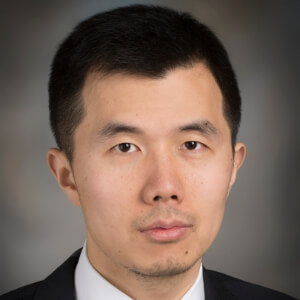Title : Multiomics analyses reveal DARS1-AS1/YBX1–controlled posttranscriptional circuits promoting glioblastoma tumorigenesis/radioresistance
Abstract:
Glioblastoma (GBM), grade IV glioma, is the most prevalent/malignant primary brain tumor in adults. The therapeutic benefit from standard treatment remains limited and median survival of GBM patients is around 15 months. Glioblastoma stem cell-like cells (GSCs) are a sub-population of highly tumorigenic GBM cells that possess unique functional characteristics including the capability of self-renewal/differentiation into other cell types, persistent proliferation, and tumor initiation upon secondary transplantation. GSCs also confer therapeutic resistance of GBM to chemotherapy/radiation therapy. Long noncoding RNA (lncRNAs) are emerging regulatory RNAs that can mediate tumor-promoting/suppressing effects in cancer. However, the role of lncRNAs in determining the functional characteristics of GSCs underlying GBM pathogenesis remains poorly understood. To fill this gap, we performed CRISPRi screen and identified >50 lncRNA hits that are overexpressed in GBM compared with normal brain tissues, including many with established function in development/disease. One of the hits, DARS1-AS1, exhibits an elevated expression with disease progression from low-grade glioma to GBM. Furthermore, its higher expression is associated with shorter overall survival of GBM patients. Functionally, depleting DARS1-AS1 inhibits the proliferation/self-renewal of GSCs, and orthotopic patient-derived tumor growth in vivo. Its depletion also impairs the homologous recombination (HR)-mediated DNA double-strand break (DSB) repair and enhanced the radiosensitivity of GSCs. Mechanistically, by integrating mass-spectrometry, RNA-seq, and enhanced crosslinking immunoprecipitation (eCLIP)-seq, we found that DARS1-AS1 interacted with YBX1 to promote target mRNA binding and stabilization to up-regulate expression of the key regulators of G1/S transition, including E2F1 and CCND1. DARS1-AS1/YBX1 also stabilized the mRNA of FOXM1, a master transcription factor regulating GSC self-renewal and DSB repair. Our findings reveal a lncRNA/RBP-mediated post-transcriptional program that ensures a coordinated regulation of DSB repair and cell cycle progression/self-renewal in GSCs, suggesting that DARS1-AS1/YBX1 axis may be a therapeutic target in GBM and inhibiting this axis together with radiation/PARP inhibitors targeting HR-deficiency may provide a new therapeutic strategy for treating GBM.
Audience Take Away Notes:
- The audience will be able to use the insight from this presentation about post-transcriptional regulation in their own disease of interest.
- The integrative multi-omics strategy designed by the current study is generally appliable and can be adopted by other researchers to systematically study the lncRNA/RBP-mediated regulatory networks in health and disease.
- This study suggests that inhibiting the DARS1-AS1/YBX1 axis may lead to HRD in GBM and make it vulnerable to PARPi therapy. Combining delivery of siRNAs/miRNA mimics that inhibit the DARS1-AS1/YBX1 axis using nanoparticle platforms with radiation or PARPi therapy may provide a new therapeutic strategy for treating GBM.




